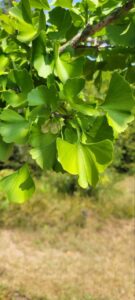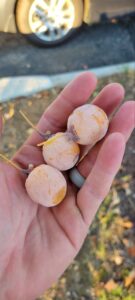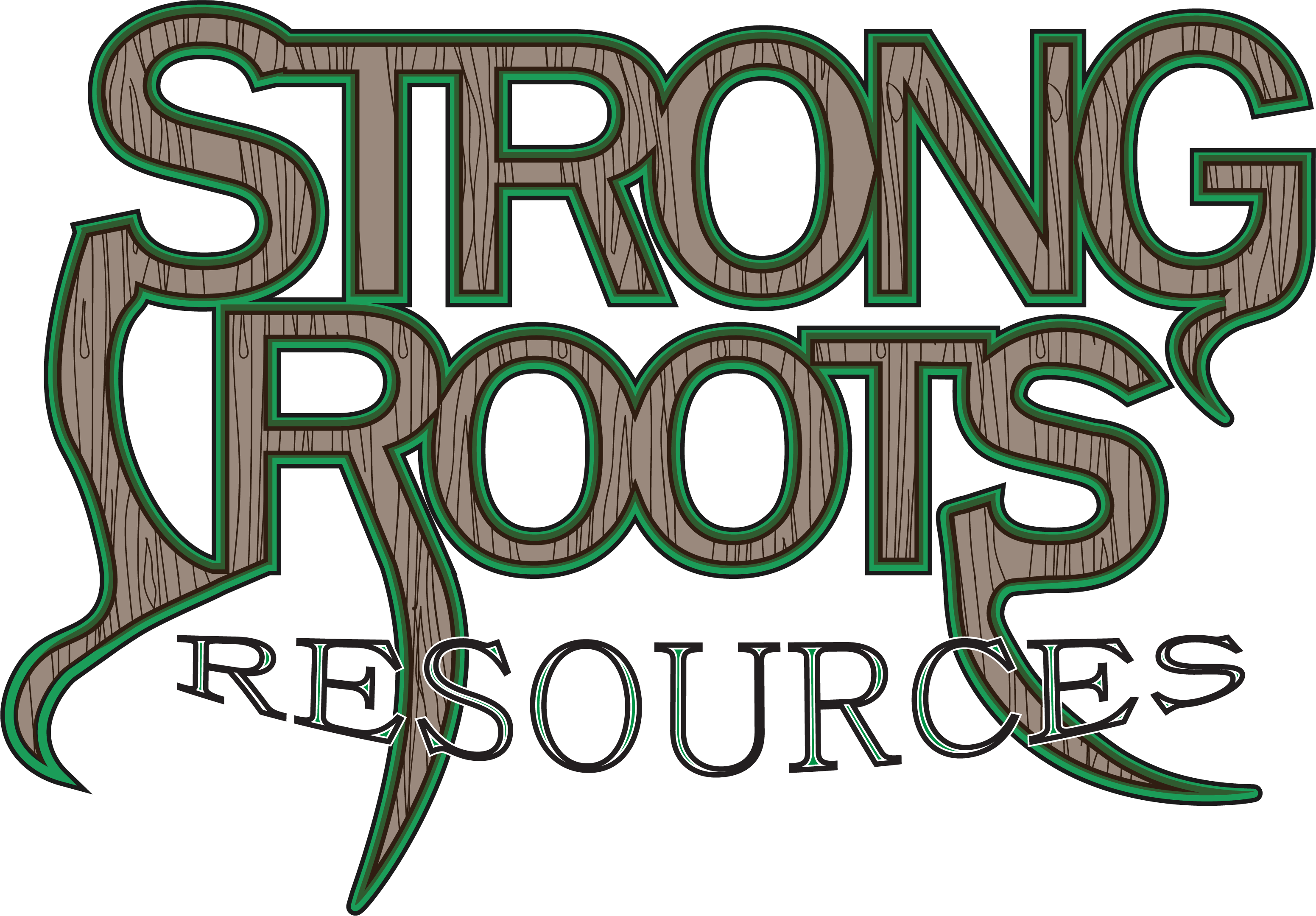Hey friends,
Today I wanted to tell you a bit about the ginkgo tree, also known as the maidenhair tree. They’re ancient, often called living fossils. There’s some in Asia that are 3,000 years old. They’re slow growing deciduous trees with a unique fan-shaped leaf and brilliant yellow fall foliage. These trees top out at about 90 feet with about a 30 foot spread. They are hardy in zones 3 through 8 in the US.

While it’s native to Northwest China, it’s a fairly common landscape planting in much of the US.
The female ginkgo is currently beginning to drop its fruit, but what we’re actually harvesting is the seed contained within the flesh – which, if you didn’t know – has a pretty pungent odor, (some folks say it smells like vomit) so wearing gloves while harvesting is a good idea. It’s also not a bad idea to wait until the flesh covering the nut has dried, then retrieve it from the ground. Once you harvest the nuts, bake them on low heat for several minutes then you can access the seed within the shell. Ginkgo shells aren’t as hard as hickory or other nuts, so there’s less effort involved in extracting the edible seed.

There is a long list of benefits of ginkgo, as well as some cautions. It’s best to cook the seed prior to consumption. Raw seeds are believed to be toxic in large quantities. The seed has uses for respiratory support and is a source of niacin, starch and protein. They’re a common ingredient in many Asian dishes as well. The leaves of the tree have uses for cognitive enhancement and improved circulation and they should be harvested in late summer before the color begins to change, then dried before storage. The leaves are what’s contained in most ginkgo biloba supplements today and there’s considerable research supporting the cognitive boosting benefits of this species.
Those who are taking SSRI meds, blood thinners or who have allergies to cashews should avoid foraging from this tree and everyone needs to make sure to do their research ahead of time.
I just discovered a female ginkgo tree near my training gym, so I’m going to harvest some nuts from that site for planting. I also know of several shopping centers containing female trees, so you’re likely to find them in your own retail areas. This tree prefers full sun and well drained soil and it’s tolerant of average suburban conditions, making it a popular choice for landscape plantings. My mom has a male ginkgo tree in her backyard and it is always beautiful in the fall. It drops a thick carpet of bright yellow leaves in early October. You can propagate these trees from new growth cuttings by rooting them in a compost and sand mix. I’ve also added some useful links for further reading. A lot of folks are turned off by the smell of the ripe ginkgo, but that just means more opportunity for the avid forager.
If you’d like to learn more about the wild medicinal, edible and otherwise useful species on your land, I offer in person property walks, foraging classes, consulting and education as well as identification, GPS tagging and documentation of those species on your property. My travel radius is within about 4 hours of Knoxville, TN so feel free to reach out to me via strongrootsresources@gmail.com.
As well, we do a weekly livestream every Friday at 6:30 eastern at the Strong Roots Resources YouTube channel. We talk about permaculture, foraging, homestead design and much more. (46) Strong Roots Resources – YouTube
Further research:
Ginkgo biloba Maidenhair Tree, Ginkgo PFAF Plant Database
Spotlight on Ginkgo: Pretty, Edible & Historic – Philadelphia Orchard Project (phillyorchards.org)
Y’all have a good week and I’ll talk to you next time.
